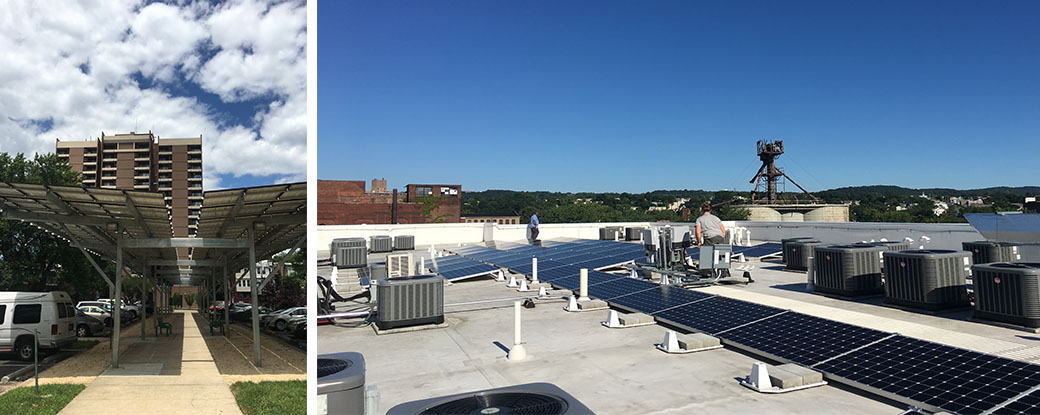News & Views
Pennrose Pillars: Our Commitment to Sustainability

The core of the Pennrose mission is to create high-quality, affordable housing that improves lives and transforms communities for the better. Through our new blog series “Pennrose Pillars,” we will explore the guiding principals that help us achieve this goal.
We recently spoke with Will Williams, Director of Sustainability and Utility Management, to share how our commitment to sustainability delivers value to residents and the local neighborhoods at large.
Can you explain why sustainability is important to Pennrose?
We’re dedicated to reducing our impact on the environment and eliminating wasteful practices for several reasons. Fist and foremost, energy efficient buildings have a tangible impact on the lives of residents. There are a number of benefits associated with green building practices, including enhanced quality of life and improved indoor air quality.
The other main driver for sustainability comes from an economic standpoint. As a long-term operator, Pennrose strives to create stable, efficient properties that will serve residents for many years to come. Utilities are one of our biggest combined expenses and we spend millions of dollars each year on energy and water. With more than 130 properties across our portfolio, we need to ensure we are maximizing resources and maintaining good maintenance practices.
We’ve had cases where non-profitable buildings became stable, profitable properties due to utility savings. In one instance, we were able to reduce a property’s sewer expenses by about $40,000. Our goal is always long-term cost predictability and profitability to prevent management turnover and to provide a high-quality living experience.
What would you say is the biggest benefit to residents?
Definitely energy affordability. Across the board, almost all of our residents in both market-rate and affordable apartment communities pay a monthly energy bill. For a very low-income family, this energy bill could be a huge portion of their income. That’s why local housing authorities are very conscious of sustainability—they understand it equates directly with household affordability. For example, if a resident moves into an older building from the 1980s, they may be paying $100 towards their energy bill. However, if they move into the same sized unit in one of our Passive House buildings, they would likely only be paying around $30. This expense management can make a really big difference for residents.
Can you describe some of the ways Pennrose aims to be more sustainable?
Sustainability starts in the development phase. We want to build high performing buildings from the beginning. Many of our local partners, such as housing authorities and state agencies, understand the importance of sustainability and are supportive. Our first step is always to jump in and figure out which green building standard will work best for the property at-hand. There are probably half a dozen legitimate options to choose from, so we want to make a data-driven decision based on what has the best return on investment and will make the building a comfortable, efficient and affordable place to live.
Additionally, we’ve made simple adjustments to existing properties in our portfolio. Recently, we’ve been doing a ton with solar power. About 20% of Pennrose communities have solar right now, and solar is evaluated for every new development as a long-term investment in energy savings and sustainability. Solar power systems are an excellent tactic to achieve long-term cost predictability and there are also many environmental perks. Pennrose also places a heavy focus on responsible water use. By paying attention to the right metrics and holding our folks accountable for good maintenance practices, Pennrose has been able to dramatically reduce water expenses.
You mentioned being data-driven. Does Pennrose utilize any tools or technology to help inform decisions?
We are always on the lookout for tools that can help us be more efficient. As an example, some of our properties only get two water bills per year with meter reads, meaning we only get two data points to help inform our analysis of properties. We recently discovered a new Wi-Fi connected water meter that provides information in real time. So instead of two data points per year, we now have access to minute-by-minute figures and we’re better able to understand what is going on in the building.
After installing the meter at Mary Taylor House in West Chester, Pennsylvania, we noticed around-the-clock water usage. We were seeing nearly 200 gallons of water used per hour between midnight and 5:00 a.m., which didn’t make sense for a senior housing community. Because of the newly installed Wi-Fi water meter, we realized there were multiple leaks in the building confined to the plumbing system. Water was literally going down the drain, but we were able to quickly address the problem.